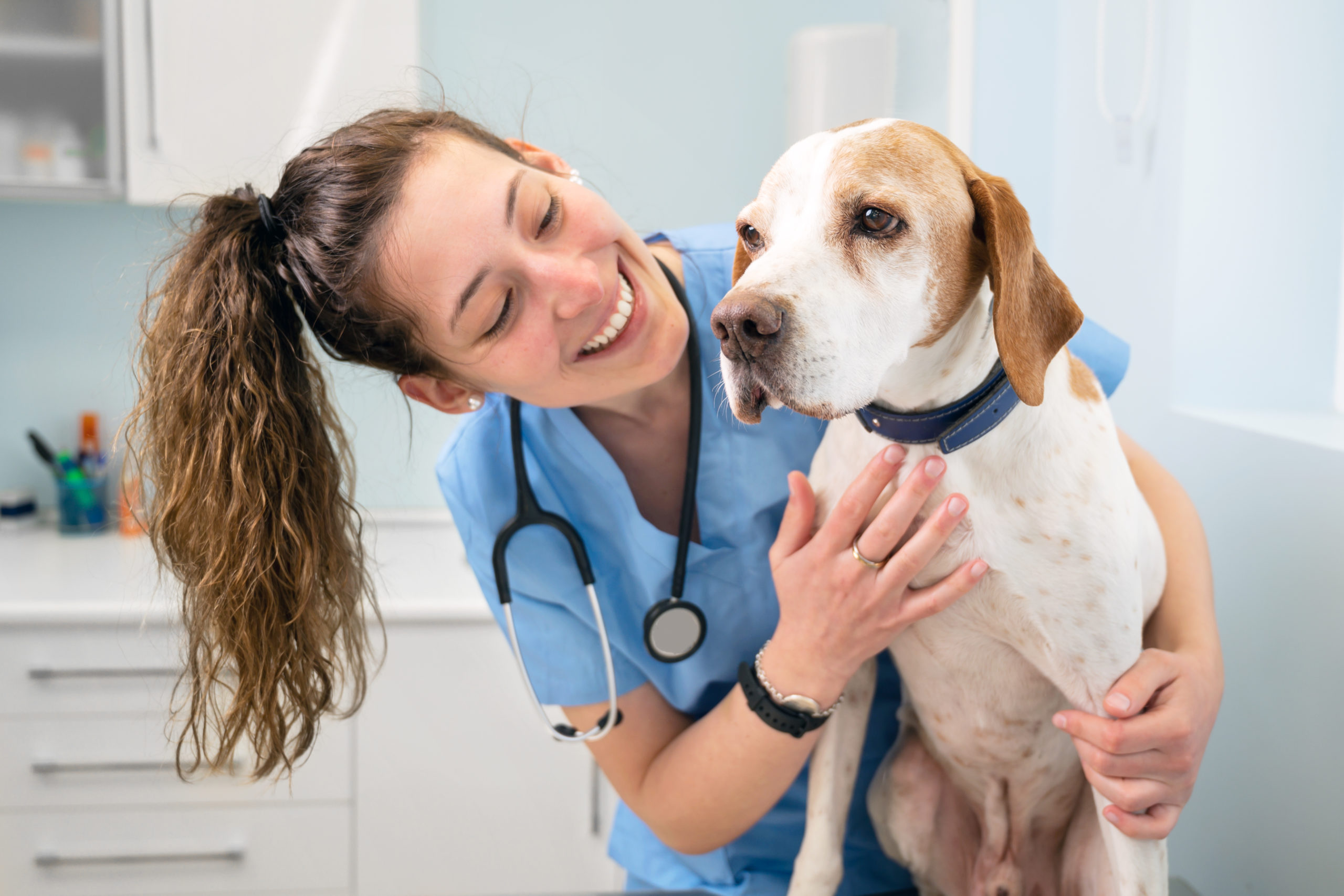Employee welfare should be the goal of all managers and future owners of veterinary hospitals — no matter the size, number of personnel or whether they work in an urban or rural environment. The data are shocking: 75% of veterinarians admit to having Burnout to a greater or lesser degree and small animal specialists are the most affected. In this article, we propose some suggestions on how a veterinary hospital can focus on avoiding burnout and Compassion Fatigue. In other words, on the well-being of its workers.
The veterinary sector is undergoing major changes that give us a glimpse of the future of the profession: large centres under the umbrella of a corporation, a majority of women studying and working as veterinarians or vet nurses, and veterinarians who are increasingly aware of the high rates of burnout, depression and anxiety that the current system is causing.
Veterinary practice owners have a responsibility to work to reduce these alarming figures. Burnout generates economic losses of millions of dollars for the industry due to sick leave, loss of talented individuals and a decrease in the quality of the service provided — not to mention clients due to continuous turnover.
Figures shaping the future of the veterinary profession
The veterinary profession is a young and predominantly female one in Europe. The majority of veterinarians are under 45 years of age. Of the veterinarians who responded to the VetSurvey poll in 2018, 58% were female and 42% male, figures that mark a trend in terms of the feminisation of the profession.
For example, in Switzerland, 58% of professionals were women, in Italy 53%, in Portugal 70%, in Poland 58%, in Germany 72% and in Spain 62%.
There are also other remarkable facts. The majority of respondents worked in small animal clinics. In 2018 almost three-quarters of the clinics were independently owned, but there was already a trend towards large corporations and hospitals, which will grow the most in the future.
These large organisations will have a major impact on the sector, especially in terms of the welfare of the profession. Taking into account these facts, we at HappyVetProject have asked ourselves the following question:
What should the Veterinary Hospital of the future look like to respond to all these changes?

Designing the Veterinary Hospital of the future: empowering women
It’s clear that young women are dominating the profession and the hospitals of the future should be adapted to this fact.
The big challenge they face is motherhood. Is it fair that a talented female vet cannot compete for excellence on an equal footing with her male counterparts because she wants to become a mother?
Starting a family represents an added challenge for work-life balance. Women end up requesting reduced working hours, temporary leave for the duration of child-rearing or reducing their academic expectations so as not to be away from their children for so many hours.
Is this fair? No, not at all. But there are solutions to make it as easy as possible for women veterinarians when they decide to become mothers. We are going to discuss the challenges of motherhood divided into two stages: breastfeeding/returning to work and school-age children.
Breastfeeding and the return to work phase
There is no need to remind of the importance of breastfeeding for the health of a baby. The Veterinary Hospital of the future should provide all the facilities for mothers to feel comfortable with breastfeeding while at work and not have to give it up when they decide to return after maternity leave.
Having the possibility to breastfeed while working or having a suitable space to keep the baby close by reduces stress for the mother and makes it possible to return to work sooner.
Hospitals and veterinary clinics should include a “nursery” room where mothers can:
– Take the baby so that breastfeeding can continue, with a caregiver or combined care with other veterinary mothers in the centre.
– Have a private space for pumping breast milk with a small refrigerator exclusively for storing milk.
– Leave children when they are unable to attend the official daycare centre because of a mild fever. This is an added problem faced by many parents – vets and non-vets alike. Is there help from parents or close relatives? Can responsibility be shared with a partner? What if both parents are vets with all the scheduled visits and surgeries?
Providing effective solutions for parents-to-be reduces absenteeism and facilitates return to work.
School-age children. The problem of balancing family life
How to juggle family life with the veterinary profession? Some ideas that can solve this problem for both veterinary mothers and fathers could be,
- The option of an intensive timetable, with a choice of mornings or afternoons, to be able to coordinate it with the work of the other parent.
- Possibility of reduced or sporadic on-call duty for fathers/mothers.
- Be flexible with the time of arrival and departure from work. Schedule the last visit of the shift three-quarters of an hour before the end of the shift. Allow time for possible complications and still not exceed the timetable for leaving the centre by too much.
- Give the possibility of teleworking for the more “bureaucratic” part: answering emails, follow-up phone calls, preparing reports, etc. using applications to track working hours

Reducing overload to improve well-being
Work overload is one of the main problems facing veterinarians and a major cause of burnout. Some solutions that can improve the well-being of the whole team in the veterinary sector could include,
– Scheduling surgeries – except for emergencies – always in the morning. Do not schedule difficult cases at the end of the workday.
– Allowing free study hours at the centre.
– Promote continuing education within working hours. Paid weekend congresses? Pay for congress registration and airfare?
– Schedule half-hour visits, short 15-minute check-ups and one-hour first visits or complicated visits. Consider the possibility of conducting some check-ups by videoconference by providing the technology and space to do so.
Reducing work overload can be easy with the right planning
– Visits should always be by prior arrangement, except in emergencies.
– Plan breaks within the working day, even if they are only 15 minutes, to get some fresh air, eat fruit, hydrate and go to the toilet.
– Be strict with meal times and give enough time for them. Provide a pleasant place to eat and relax. It’s also the veterinarian’s responsibility not to use this time to answer e-mails or make work calls.
– Provide a comfortable place for the emergency staff to sleep, stretch, with a Bluetooth speaker to listen to music and good lighting for reading.
Caring for the mental health of the entire hospital team
The veterinary profession faces another problem in addition to Burnout: Compassion Fatigue. The veterinary sector, empathetic by nature, can reach a limit of emotional exhaustion due to the nature of the work itself. Compassion Fatigue can affect both the veterinary team and the vet assistants.
An emotionally exhausted team member may be on frequent sick leave, have a lack of interest in the work, lose empathy for patients and their families, work without interest or concentrate on what they are doing, or become isolated both socially and professionally. This situation is not only detrimental to the individual but also to the whole team, as it affects the overall quality of work at the centre.
Some suggestions for detecting Compassion Fatigue among workers include:
- Give out the Compassion Fatigue test two or three times a year to detect possible cases. We make the test available to all managers of veterinary centres free of charge in different languages. For more information, please read the article Compassion Fatigue Syndrome Assessment Tools for Veterinary Centre Managers.
- Set aside an appropriate time in team meetings to express feelings and emotions that have been generated by the cases discussed, both those that went well and those that went badly.
- Put up a Hall of Fame board with success stories, and also to be able to express grief and remembrance for the patients who have left.
- Provide an external psychological support service for members of the team who need it.
Other suggestions for improving the well-being of the team in the future Veterinary Hospital
It’s been shown that workers in companies that encourage good social relations between team members have less stress. We discuss how important this is in our article “Nurturing social ties at the clinic is important. Find out why” we showed that good working relationships are significant for well-being: they lower stress levels and increase productivity and provide a general sense of happiness.
Voluntary and collective activities outside clinic hours foster team spirit. An escape room, a picnic outing with children and pets or a celebratory meal can be a great way to bring people together and integrate new members.
Another possibility is to set aside a space for staff’s dogs, without mingling them with the patients, to avoid separation anxiety and the worry of being alone for so many hours. This is a trend that has been adopted by many large companies around the world, such as Amazon, Etsy, Google or large advertising agencies. Knowing that your dog is close to you instead of waiting for you alone at home gives you priceless peace of mind, doesn’t it?
Can you think of more ideas? We’d love to hear them and incorporate them into this article – leave us your comments below!
References:
VetSurvey 2018. Survey of the veterinary profession in Europe. Federation of Veterinarians of Europe.








